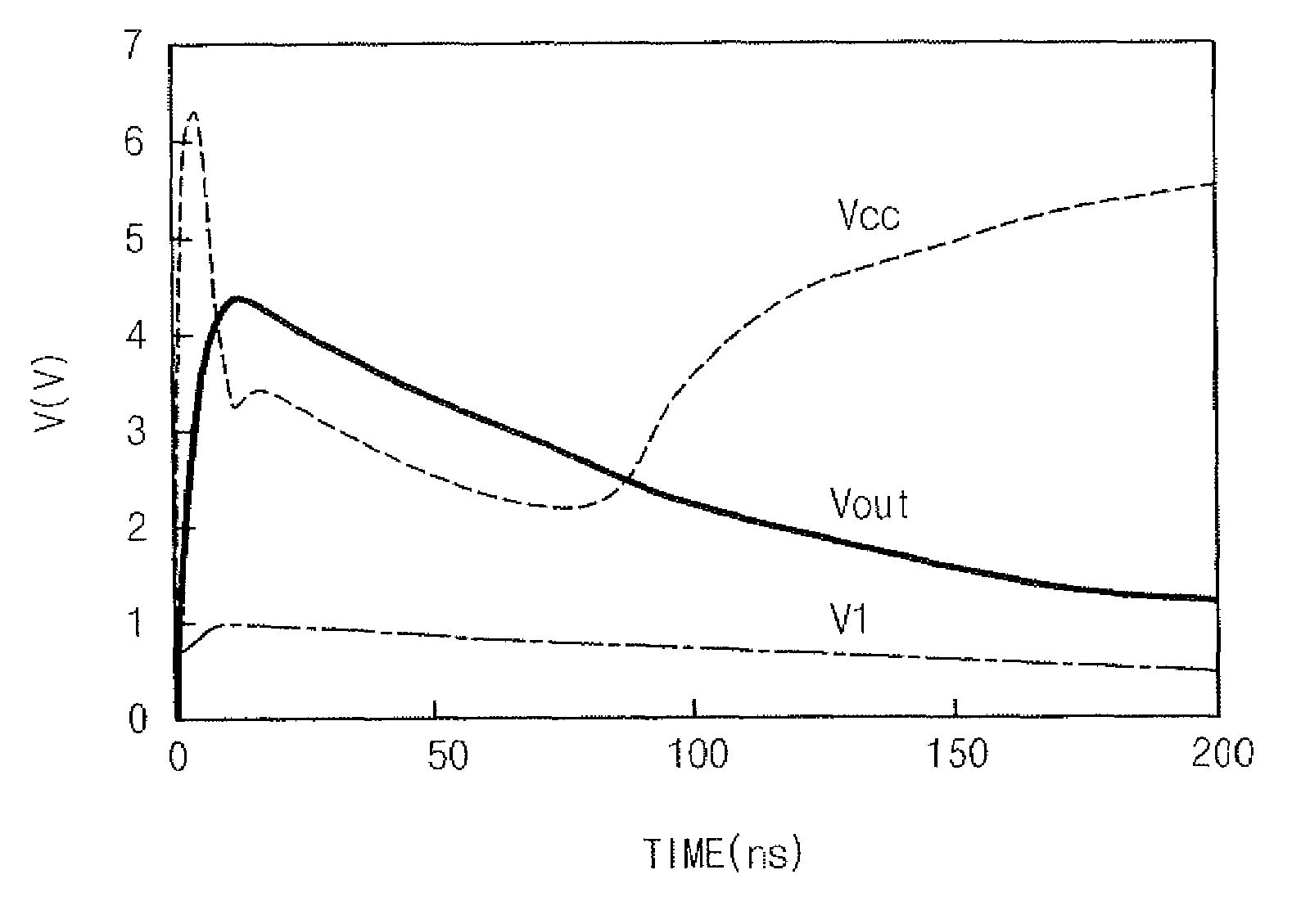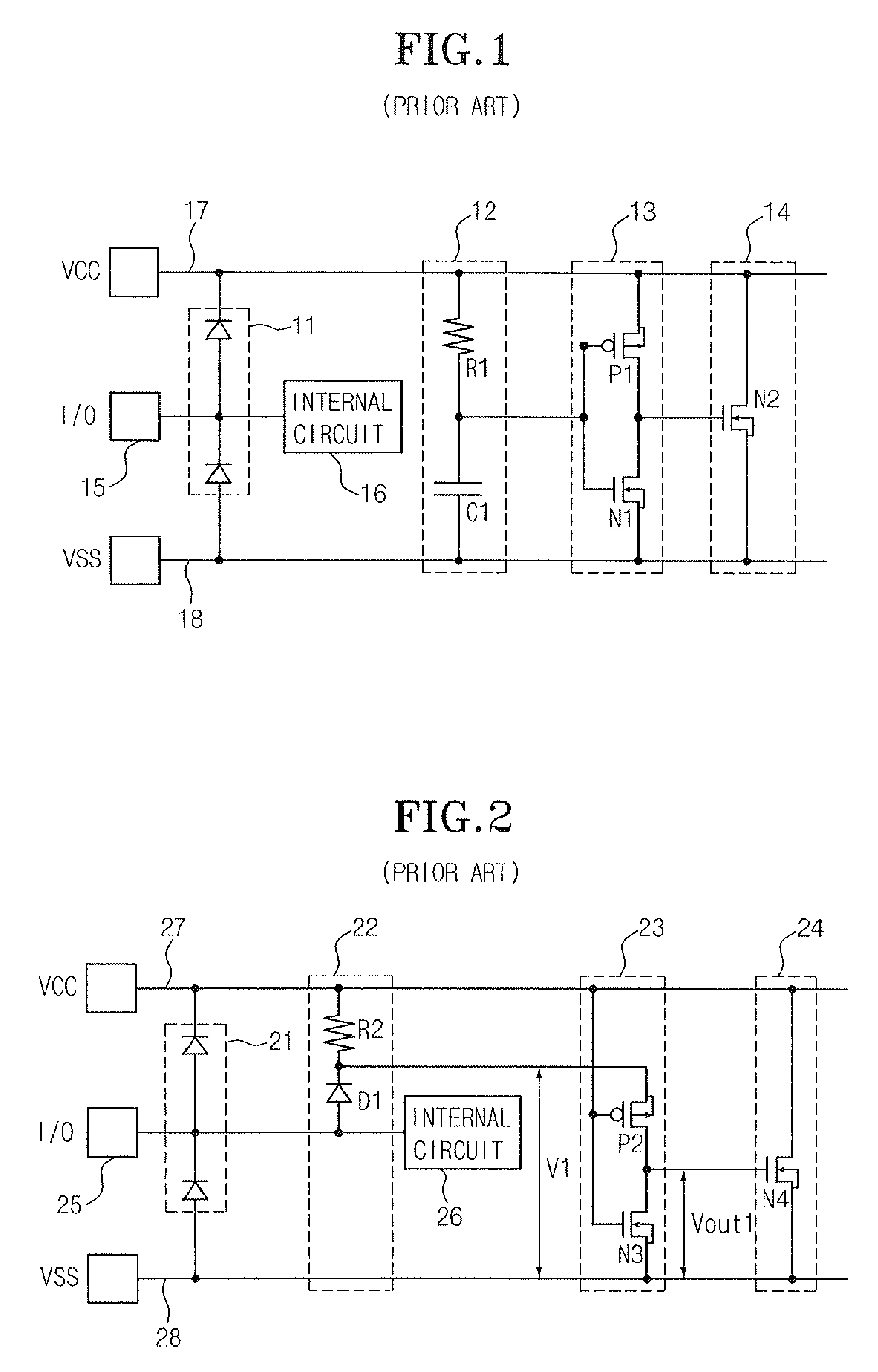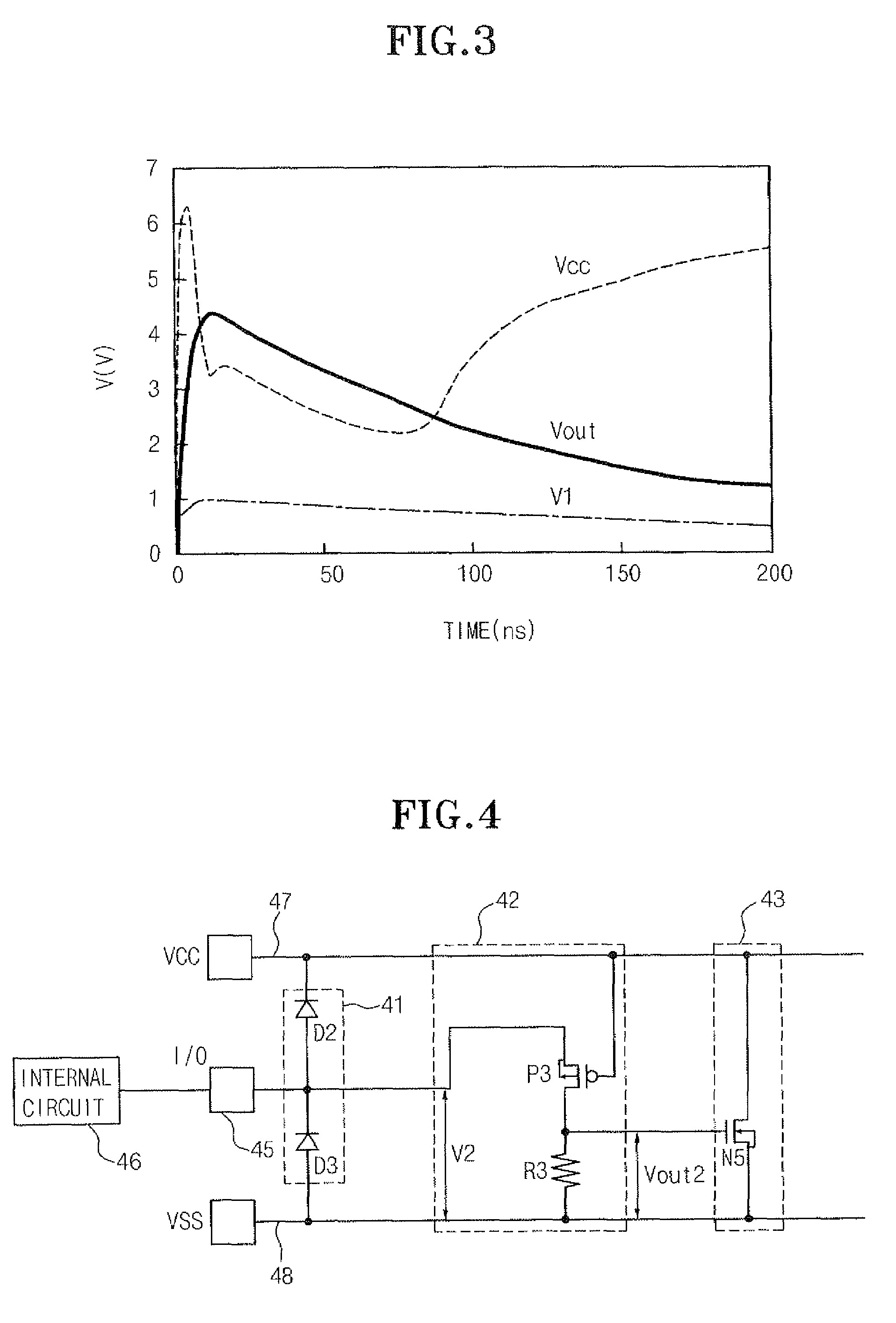Device to protect semiconductor device from electrostatic discharge
- Summary
- Abstract
- Description
- Claims
- Application Information
AI Technical Summary
Benefits of technology
Problems solved by technology
Method used
Image
Examples
first embodiment
[0063]FIG. 4 is a circuit diagram illustrating a device for use in protecting a semiconductor device from ESD damage according to the present invention.
[0064]The device to protect a semiconductor device from ESD according to a first embodiment of the present invention is provided with a transferring unit 41, a detecting unit 42 and a discharging unit 43.
[0065]The transferring unit 41 includes diodes D2 and D3, which are serially connected between an external voltage line 47 and a grounding voltage line 48. A cathode of the diode D2 is connected to the external voltage line 47 and an anode of the diode D3 is connected to the grounding voltage line 48. The transferring unit 41 transfers static electricity to the external voltage line 47 so that the static electricity inputted from the input / output terminal 45 is not transferred to an internal circuit.
[0066]The detecting unit 42 includes a PMOS transistor P3 and a resistance element R3, which are serially connected between the input / ou...
second embodiment
[0077]The device to protect a semiconductor device from ESD according to the present invention shown in FIG. 6 is adapted to protect an internal circuit 66 from negative (−) static electricity inputted to the input / output terminal 65 in a case in which the elements in the internal circuit 66 connected to the external voltage line 67 are very weak.
[0078]In FIG. 6 a PMOS transistor P4 is provided as a discharging unit 63 unlike the first embodiment in which a NMOS transistor N5 is provided as the discharging unit 43, as shown in FIG. 4. Further, the detecting unit 62 includes a resistance element R4 and a NMOS transistor N6, which are serially connected between the external voltage line 67 and a grounding voltage line 68. Here, the gate of the NMOS transistor N6 is connected to the grounding voltage line 68, the drain to the input / output terminal and the source to the resistance element R4.
[0079]Referring to the operation of the device to protect a semiconductor from an ESD according ...
third embodiment
[0081]The device for use in protecting a semiconductor device from ESD according to the present invention shown in FIG. 7 is further provided with an amplifying unit 74 between the detecting unit 72 and the discharging unit 73 to enhance the driving ability of the discharging unit 73.
[0082]The amplifying unit 74 includes two CMOS type inverters having a PMOS transistor and a NMOS transistor, which are serially connected between the external voltage line 77 and the grounding voltage line 78.
[0083]Discharging operation can be performed more stably as the detection voltage detected in the detecting unit 72 is sufficiently amplified by the amplifying unit 74 and then applied to the discharging unit 73. Thus, the device to protect a semiconductor device from ESD protects the internal circuit 76 of the semiconductor device from the static electricity inputted to the input / output terminal 75.
PUM
 Login to View More
Login to View More Abstract
Description
Claims
Application Information
 Login to View More
Login to View More - R&D
- Intellectual Property
- Life Sciences
- Materials
- Tech Scout
- Unparalleled Data Quality
- Higher Quality Content
- 60% Fewer Hallucinations
Browse by: Latest US Patents, China's latest patents, Technical Efficacy Thesaurus, Application Domain, Technology Topic, Popular Technical Reports.
© 2025 PatSnap. All rights reserved.Legal|Privacy policy|Modern Slavery Act Transparency Statement|Sitemap|About US| Contact US: help@patsnap.com



